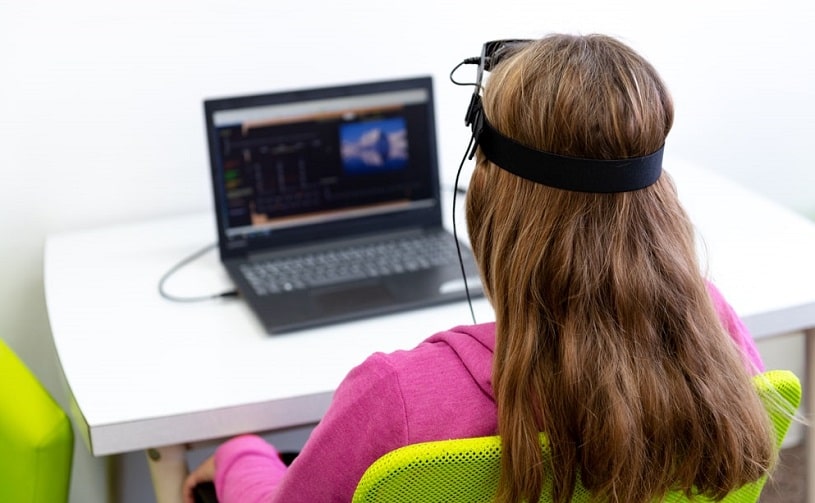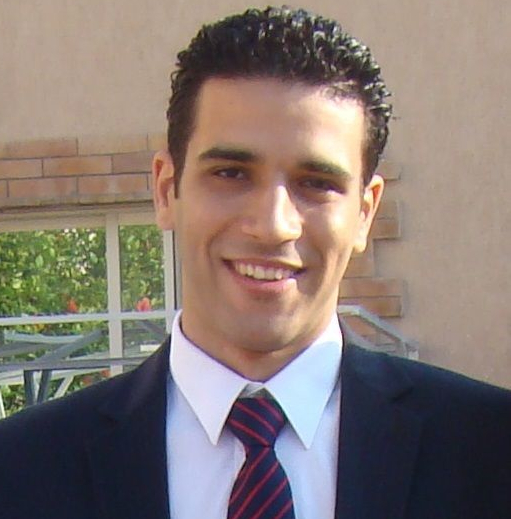People can control many of their bodily functions without even thinking about them. For example, when we raise our hand or take another step while walking, it doesn’t require any specific concentration, and we control these movements. However, some processes are involuntary, like heart rate, breathing, or muscle tension. All of these are connected to the feeling of anxiety, pain, and even substance abuse.
Table Of Contents:
What is biofeedback? It is a training program that teaches people to understand and control these involuntary body processes. As a result, patients can further control them to avoid unpleasant feelings connected to their disease.
Biofeedback therapy is helpful for a number of medical conditions, such as high blood pressure, migraine headaches, incontinence, and chronic pain. In addition, recovering addicts can benefit from biofeedback treatment by understanding how involuntary functions drive their substance abuse.
During sessions, the biofeedback machine receives physiological information from the body and converts these signals into audio and visual cues. Trained therapists then guide the process and teach the client to make subtle changes based on this information. Essentially, this approach uses the power of thoughts to control the body and improve a health condition.
What Is Biofeedback?
Biofeedback therapy is a non-invasive treatment that can improve mental health. It involves monitoring physiologic information to teach patients to modify their physiologic functions. This approach encourages people to take responsibility for their well-being, mood, and mental health.

Studies have shown this intervention is useful in treating many chronic medical conditions, such as pain, migraine headaches, incontinence, and hypertension. Essentially, this therapy promotes relaxation and can be used to improve conditions associated with stress. Thus, it is also helpful for various illnesses, ranging from fibromyalgia, constipation, and irritable bowel syndrome to chemotherapy side effects, motion sickness, and tinnitus (ringing in the ears).
Biofeedback therapy is available to manage a range of medical conditions triggered or made worse by stress. Experts believe that this training program is beneficial as a natural relaxation technique for overall health and wellness. With time, clients learn self-regulation, which can be practiced in daily life even after formal sessions are over, and monitoring machines are no longer required.
How Does Biofeedback Work?
Human beings have control over voluntary activities, such as walking and talking. However, certain body functions, such as breathing and heart rate, are involuntary. Biofeedback therapy, as a treatment technique, was first developed in the 1970s.
It Is a Mind-Body Training Program in Which a Person Learns to Modify Physiological Functions, Such As:
- Sweating
- Breathing rate
- Heart rate
- Blood pressure
- Skin temperature
- Muscle contractions
During the session, patients see these physiological measurements on the monitor. As the training goes on, they practice different relaxation techniques and see how they influence their blood pressure, heart rate, etc. Over time, participants learn to control these involuntary functions without the feedback machine.
This active-participation patient-centered therapy helps recovering addicts gain control over some involuntary functions that add to distress during a tense or nervous emotional state. By learning to track the body’s reaction to physical and emotional stress, people with substance abuse problems can make subtle changes in their response to stressful situations. These relaxation exercises and stress-relief interventions help induce a feeling of well-being and calm.
The trained therapists use the information obtained from tracking devices to create a customized plan tailored to the specific needs of each recovering addict.

Alcohol or drug withdrawal symptoms are stressful and often associated with intense involuntary responses. Biofeedback treatment helps manage many drug and alcohol withdrawal symptoms, including anxiety, restlessness, and muscle pain.
What Happens During Each Session?
How does biofeedback work? During a session in the therapist’s office, electrodes or finger sensors are attached to the client’s skin. These sensors transmit information to the special machine, which displays images or flashing lights to represent the respiratory and heart rate, sweating, skin temperature, and muscle activity. When a recovering addict is under stress, the increased heart rate, tight muscles, excessive sweating, and quick breathing are evident on the monitor.
How Long Does The Treatment Take?
Each biofeedback training session typically lasts 30 to 60 minutes and is administered by a therapist with specialized training. This intervention requires a biofeedback machine and other specialized equipment during supervised sessions in the office. Smartphone apps are available to practice the exercises at home and supplement the training received during formal sessions.
How Many Sessions Are Needed For Addiction Treatment?
For people with a mild addiction, results may be evident in as few as ten sessions. However, people with severe addiction may need as many as 50 sessions. Ten sessions may be enough for several medical problems, but it may take longer (20 sessions or so) to respond to some health conditions, such as high blood pressure. Therefore, drug relapse prevention plans and addiction treatment with biofeedback can extend over two to three months or longer.
Biofeedback Exercises
Just seeing auditory or visual signals representing one’s physiologic functions on the monitor is not enough to control them. Biofeedback training also includes teaching patients with special exercises. Addicts and other patients can see whether these exercises are helpful in real-time, as the results will be seen on the monitor.
Biofeedback Training Exercises Train Recovering Addicts in Three Fundamental Relaxation Techniques:
Mindfulness Meditation
Biofeedback meditation is a technique teaching patients to focus on the moment. Recovering addicts are taught to release negative emotions and focus on positive thoughts. A moment-by-moment awareness of feelings during biofeedback meditation helps addicts focus on the present rather than rehashing a problematic past or worrying about the future. With its roots in Buddhist meditation, mindfulness teaches peaceful concentration for greater mind control.

Progressive Muscle Relaxation
When under stress, addicts use relaxation exercises to release tension in their muscles, one at a time. Progressive muscle relaxation helps recovering addicts systematically focus on a muscle group, such as the neck and shoulders, and alternately tighten and relax these muscles. When practiced consistently, these exercises help lower muscle tension during periods of anxiety and stress.
Moreover, progressive muscle relaxation helps reduce chronic headaches, insomnia, and chronic pain in several conditions.
Guided Imagery
By guiding their thoughts towards optimistic, soothing scenarios and images, addicts learn to relax the mind and body. This relaxation method helps focus the mind on pleasant images, such as the texture and color of a fruit, which directs the body into a relaxed state. It helps soothe anxiety, restlessness, muscle tension, and difficulty sleeping, which are commonly seen in people with substance abuse problems.
Advantages Of Biofeedback Therapy
The most important advantage of biofeedback treatment is that it is a non-invasive, self-regulatory, medication-free technique with no known severe side effects. Patients can combine it with other types of psychotherapy, such as cognitive-behavioral therapy (CBT), or contingency management. It integrates well with alternative techniques for addiction recovery, such as art and music therapy.
Biofeedback therapy is a good alternative for individuals who are intolerant to medications. It can help reduce or eliminate the need for medications for addiction treatment.
It may also help people who have failed to improve with medications. Essentially, these techniques help people take charge of their health in a safe, non-invasive manner. However, these exercises may not be appropriate for all patients and every medical condition.
It is a good idea to discuss this treatment with a healthcare professional and find a good therapist. Before beginning treatment, ask the therapist about their registration and certification of the machine as well as their training and experience. Before starting treatment, recovering addicts should also obtain information about the number of sessions required, the cost, and insurance coverage.
Using Biofeedback Training For Addiction Treatment
Training in stress management helps addicts understand how their addiction affects their minds and bodies and modify their response to stress. In essence, it supports recovering addicts to gain control over their stages of recovery. Likewise, bio- and neurofeedback are effective modalities in substance abuse treatment because they give recovering addicts a psychological edge in fighting addiction.
Biofeedback therapy is helpful in substance abuse recovery because it treats many of the common symptoms associated with drug and alcohol withdrawal, such as anxiety, depression, preoccupation, restlessness, fatigue, and insomnia. The goal is to help a recovering addict improve mental, physical, emotional, and spiritual well-being through self-regulation, relaxation response, and stress management.
Getting addiction treatment during COVID is not a problem as many rehabs have already adapted to the situation. They follow all safety measures and CDC guidelines. Some rehabs even provide COVID-19 testing services. Get help today and change your life.
Find Drug Rehabilitation Centers Near You Anywhere In the US
Addiction Resource team has compiled an extensive list of the top drug rehabilitation facilities around the country. Click on the state you are interested in, and you'll get a list of the best centers in the area, along with their levels of care, working hours, and contact information. Haven't found the rehab you need? Call the toll-free helpline below for professional assistance.

- Alabama
- Alaska
- Arizona
- Arkansas
- California
- Colorado
- Connecticut
- Delaware
- Florida
- Georgia
- Hawaii
- Idaho
- Illinois
- Indiana
- Iowa
- Kansas
- Kentucky
- Louisiana
- Maine
- Maryland
- Massachusetts
- Michigan
- Minnesota
- Mississippi
- Missouri
- Montana
- Nebraska
- Nevada
- New Hampshire
- New Jersey
- New Mexico
- New York
- North Carolina
- North Dakota
- Ohio
- Oklahoma
- Oregon
- Pennsylvania
- Rhode Island
- South Carolina
- South Dakota
- Tennessee
- Texas
- Utah
- Vermont
- Virginia
- Washington
- West Virginia
- Wisconsin
- Wyoming
Hope Without Commitment
Find the best treatment options. Call our free and confidential helpline
Most private insurances accepted
Page Sources
- De Witte NAJ, BuyckI, Van Daele T, Combining Biofeedback with Stress Management Interventions: A Systematic Review of Physiological and Psychological Effects., https://www.ncbi.nlm.nih.gov/pubmed/30604099
- BIOFEEDBACK, D. (2008). Biofeedback: an overview in the context of heart-brain medicine. Cleveland Clinic journal of medicine, 75, S31. https://pubmed.ncbi.nlm.nih.gov/18540143/
- Frank, D. L., Khorshid, L., Kiffer, J. F., Moravec, C. S., & McKee, M. G. (2010). Biofeedback in medicine: who, when, why and how?. Mental health in family medicine, 7(2), 85. https://www.ncbi.nlm.nih.gov/pmc/articles/PMC2939454/
- Goessl, V. C., Curtiss, J. E., & Hofmann, S. G. (2017). The effect of heart rate variability biofeedback training on stress and anxiety: a meta-analysis. Psychological medicine, 47(15), 2578-2586. https://pubmed.ncbi.nlm.nih.gov/28478782/
- Kristeller, J. L. (2007). Mindfulness meditation. https://www.indstate.edu/cas/sites/arts.indstate.edu/files/Psychology/Marlatt_and_Kristeller_-_APA_Ch.pdf
- McCallie, M. S., Blum, C. M., & Hood, C. J. (2006). Progressive muscle relaxation. Journal of human behavior in the social environment, 13(3), 51-66. https://www.tandfonline.com/doi/abs/10.1300/J137v13n03_04
- Gomathy, G., & Gracy, G. S. (2021). Effectiveness of Progressive muscle relaxation technique among clients with anxiety undergoing alcohol de-addiction in selected rehabilitation centers-Madurai, Tamilnadu. International Journal of Nursing Education and Research, 9(2), 207-212. https://www.researchgate.net/profile/Stella-Gracy/publication/353573116_International_Journal_of_Nursing_Education_and_Research_Effectiveness_of_Progressive_muscle_relaxation_technique_among_clients_with_anxiety_undergoing_alcohol_de-addiction_in_selected_rehabilitation_c/links/6103d95a1ca20f6f86ea6870/International-Journal-of-Nursing-Education-and-Research-Effectiveness-of-Progressive-muscle-relaxation-technique-among-clients-with-anxiety-undergoing-alcohol-de-addiction-in-selected-rehabilitation-c.pdf
- Mullally, W. J., Hall, K., & Goldstein, R. (2009). Efficacy of biofeedback in the treatment of migraine and tension type headaches. Pain physician, 12(6), 1005-1011. https://pubmed.ncbi.nlm.nih.gov/19935987/

 Authored by
Authored by  Reviewed by
Reviewed by 











